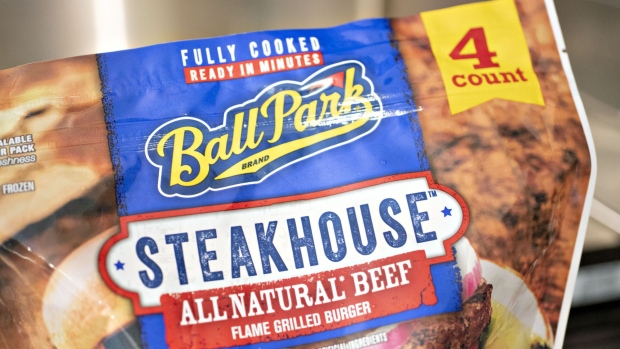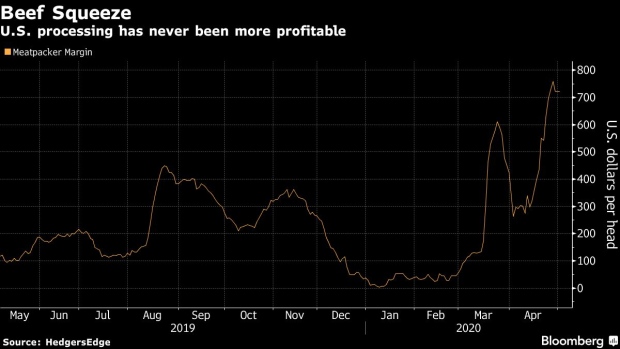May 4, 2020
Tyson sees virus disruptions pushing up costs, cutting volumes
, Bloomberg News

Disruptions from the coronavirus pandemic are so severe that America’s top meat producer couldn’t offer financial guidance for the year.
Plant shutdowns and slowdowns that have wreaked havoc on the industry in the past month are expected to continue, pushing up operating costs and reducing volumes for the remainder of fiscal 2020, Tyson Foods Inc. said in its quarterly earnings statement. Volume increases in retail have not been sufficient to offset the losses in foodservice.
“Due to the uncertainty of the COVID-19 impacts to our operations, we are currently unable to provide segment adjusted operating margin guidance,” Chief Executive Officer Noel White said in a statement Monday.
Three months ago, Tyson reiterated a positive long-term outlook, citing easing trade tensions. At the time, it forecast an adjusted operating margin in the beef segment toward the upper end of 6.5 per cent to 7.5 per cent, with a pork margin of 6 per cent to 8 per cent.

Key Insights
- With thousands of U.S. meat-plant workers falling ill and a dozen plants shutting down, processors are wrestling with ways to keep consumers supplied with protein while also protecting workers from coronavirus.
- The shutdowns mean beef and pork prices are surging, and farmers are destroying tens of thousands of animals as oversupply pushes down livestock prices.
- For meat processors, the disruptions mean lower volume but higher margins with share prices gaining since the havoc started. Not everyone is bullish, with Tyson cut to market perform at Bernstein on expectations that third-quarter output will be hurt by closures and absenteeism.
- The U.S. government stepped in last week, with President Donald Trump invoking the Defense Production Act to keep plants running. But that won’t be a quick fix and unions say the measure puts workers in danger.
- Agriculture Secretary Sonny Perdue said Thursday that slaughterhouses would reopen in a matter of days, although social-distancing measures will limit output, with a shortfall of as much as 15 per cent.
- Exposure to food service is a risk for Tyson, with about 40 per cent of sales coming from that channel
Market Reaction
- Tyson, down 34 per cent this year, fell as much as 5.2 per cent before the start of regular trading Monday
Get More
- Second-quarter adjusted earnings were 77 cents a share compared with the US$1.04 average analyst estimate and US$1.20 a year ago.
- Click here for the earnings statement
- Conference call 9am NY Monday (844) 890-179





